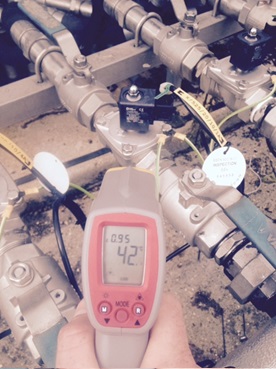News Letter
Sign Up & get 33% off your first order
Enter your preferred name & e-mail to subscribe

The UK produces in excess of 16 million tons of food waste in total per year, that’s 251Kg per UK person per year, or 111Kg pa of household waste per person annually. Whether this is due to an excessive throwaway society, cheap food deals, fast food and drive through and aggressive marketing techniques, the bottom line is that we all throw away on average 300g of unused undigested food every day.
Normally this waste food is either disposed of in some way, in bins, waste disposal systems, tips with a small amount partly recycled though your pet or compost heap. However, the majority of 16 million tons of potentially biodegradable smelly food is land filled every year. Now local councils, inspired by enthusiastic environmentally intelligent green scientists have been working to collect this free source of Methane Gas (Biogas) and recycle it via food waste recycling bins, so that this can be processed or composted by Anaerobic Digestion Plants. Basically the food is allowed to rot and give off its smelly Methane gas which can then be collected and used to replace existing use of fossil fuels, thus this Green Energy Saving Process helps reduce the Carbon Dioxide emissions (carbon footprint).
View our Biogas safety shut off valves.
Anaerobic digestion process or waste treatment process is now commonplace in waste treatment plants all around the world. The only difference between biogas works and landfill sites is that the methane of biogas is collected rather than released into the atmosphere, which is good news as biogas is 25 times more potent than carbon dioxide, and remember it contains Sulphur dioxide the stinky gas.

Biogas treatment works or anaerobic digestion plants recycle waste food, manure from animals, solid and organic waste, by using bacteria fermentation processes to break down the organic waste to produce biogas. Biogas consists of about 65% Methane and 35% Carbon dioxide, with traces of Hydrogen Sulphide (the smell). After digestion of the food waste, the remaining sludge can then be recycled as a natural fertilizer. Any final effluent liquid from the waste treatment plant will be purified and filtered to an acceptable standard before being released back into rivers, streams or drainage systems.
The picture on the right shows a zero-rated stainless steel 11/2" BSP 2 way normally closed solenoid control valve with Viton (FKM) sealing and low heat ATEX EExmIIT4 encapsulated and increased safety solenoid coils.
The Biogas mixture of Methane Gas, Carbon dioxide and trace elements of sulphur Dioxide will be further processed to remove the Carbon Dioxide and Sulphur Dioxide elements leaving 99% methane gas, which are controlled by ATEX and Natural Gas and Biogas Approved solenoid valves. This Methane Gas is similar to town gas or Natural Gas as supplied from the North Sea, gas pipelines from parts of Europe, gas from cracking process’s and what’s shipped in from Sea freight Gas Storage Tankers from America and other countries from around the world. Obviously, for transportation or storage purposes, the Methane gas is compressed to reduce storage and transport volume. For example at 1 atmospheric pressure the stored volume is doubled, 10 bar (10 atmospheres) the stored gas is 10-fold and for 100 bar you can store 100 times the amount of Biogas within the same volume and thus can then be later used as biogas fuel for cars, lorries, buses, hydraulic and electric power generators and domestic or commercial heating. These high pressure storage systems utilise high pressure solenoid valves for the On/OFF control of high pressure liquids and gas.
Suitable materials for valves and equipment for biogas would be stainless steel valve body and internals with FKM (Viton) sealing.
A catalouge of articles covering all aspects of solenoid valves
Enter your preferred name & e-mail to subscribe